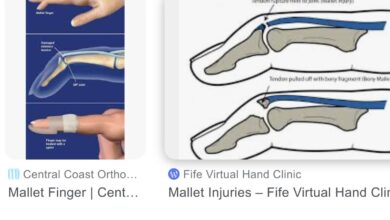POLYMYALGIA RHEUMATICA: IT’S MORE COMMON THAN WE THINK!

I would imagine Polymyalgia Rheumatica is a name you’ve not heard before. It’s a very complicated term that’s a mouthful to say and even harder to spell. It goes by other names such as Giant Cell Arteritis and Temporal Arteritis, but the common name, Polymyalgia Rheumatica, or PMR, is used most often.
PMR is an inflammatory rheumatic disorder occurring most frequently in adults over the age of 50, and characterized by significant pain and stiffness most often in the neck, shoulders, hips and lower back. Other joints can be affected and joint swelling often occurs. A “rheumatic” disorder is one that causes inflammation of the muscles, joints, and fibrous tissues (ligaments, tendons). Accompanying the inflammation is pain, and sometimes, swelling and stiffness.
The cause of PMR is unknown, but “age-related immune alterations in genetically predisposed subjects contribute to development” of PMR. That means, if you have genes that in your older age years change your immune system, things can happen that result in the symptoms patients experience. Most cases simply appear “out of the blue” with no obvious trigger. It just happens, gradually at first, and worsens progressively. Some patients have symptoms for months before seeking medical attention.
It is the second most common rheumatic condition, after rheumatoid arthritis. It occurs as a single disease with the symptoms mentioned above, or it can be accompanied by Giant Cell Arteritis/Temporal Arteritis, which is a very serious condition that can cause blindness. More about that later.
The diagnosis of PMR is made by an assessment of the patient’s symptoms and physical findings. The location and pattern of the pain, the presence of morning joint stiffness, the age of the patient, and a ton of diagnostic intuition all contribute to making the diagnosis. There is no specific test and no specific physical finding that says, “yes, absolutely, you have PMR.” There are, however, blood tests called “inflammatory markers” that aid in confirming the diagnosis. These tests, ESR and CRP, tell the doctor if there is an inflammatory condition going on in your body. ESR, or Sed Rate, and CRP, or C-Reactive Protein, are very helpful in telling the doctor if the patient’s symptoms are indeed PMR.
Typically, an older patient comes to the doctor complaining of pain and morning stiffness in his shoulders and hips. Other joints may also be affected and swelling of the wrist, for example, may be seen. The patient thinks he has old-age rheumatism, but says he hurts worse than ever, he is very stiff and sore, and feels tired all the time. As he becomes active during the day he feels some better, but the pain is always there. If he rests awhile, the stiffness and pain return. The patient appears very uncomfortable so the doctor suspects PMR. The patient is sent to the lab for blood tests.
Ninety-five percent of PMR patients have shoulder pain. The “cardinal feature” is the presence of pain in both shoulders, or both hips. An older person with pain and stiffness in both shoulders and/or hips must be suspected of PMR and be sent to the lab for blood tests. The most reliable tests for confirming clinical suspicion of PMR are the Sed Rate and CRP. If one or both is elevated, the diagnosis is a virtual certainty and treatment can be started. PMR can mimic other less common, yet more severe, syndromes, so the doctor needs to be certain to rule out those disorders.
One of the more serious imposters of PMR is Giant Cell Arteritis (GCA), also called Temporal Arteritis. If the PMR patient also has headache, scalp tenderness, tongue or jaw pain that increases with chewing, and vision changes, an aggressive diagnostic work-up for GCA needs to begin. That includes biopsy of the temporal artery in the scalp. It is located in the temple above the jaw joint and if inflamed, may be tender to the touch. 16-20% of PMR patients have GCA, and 50% of GCA patients also have PMR. If GCA is severe and involves a wide area of the arteries in the head, it can cause blockage of the blood flow to the eye and cause permanent vision loss. That is a preventable complication so a quick diagnosis and early aggressive treatment is imperative.
The treatment of choice for PMR is corticosteroids, or prednisone. It works quite well for relieving symptoms, but must be taken for 1-2 years to prevent relapses. Mid-range doses (20mg) of prednisone are used at first, the dose of prednisone is slowly tapered while frequently rechecking Sed Rate and CRP levels.
Dr. G’s Opinion: I saw numerous cases of polymyalgia Rheumatica while in practice, and I’ve seen it twice since I retired. It’s one of those diseases that should ring a bell with a doctor when an older patient says my joints are stiff and BOTH of my shoulders, BOTH of my hips, and my neck hurt. A light should go on that flashes “POLYMYALGIA RHEUMATICA!” If it doesn’t, the doctor is probably one not practicing clinical medicine as I know it.
Corticosteroid treatment of PMR is very gratifying for both the patient and the doctor. The doctor feels satisfaction because he sees his patient get better over time, and the patient is happy because his pain and stiffness are gone and he “has his life back.” The doctor must not ignore the possibility of GCA and keep a vigilant eye on the patient. Mis-diagnosing it has severe consequences. It’s better to do a temporal artery biopsy unnecessarily than not do one, miss the diagnosis, and have the patient go blind.
References: Figus FA, et al. Imaging in polymyalgia Rheumatica: which technique to use? Clin Exp Rheumatol. 2021 Jul-Aug;39(4):883-888.
Guggino G, et al. Pathogenesis of polymyalgia rheumatica 2018 Mar 27;70(1):10-17.
Gazitt T, et al. Polymyalgia Rheumatica: The Great Imitator IMAJ 2019 Sep;21:627-8.
Mahmood SB, et al. Polymyalgia Rheumatica: An updated review. Clev Clin J Med 2020 Sep;87(9):549-556.




